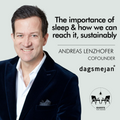SUSTAINABLE LIVING: TAKING IT OFF THE GRID
The definition of sustainable living encompasses, obviously, sustainability. Yet this word has been used so flippantly that it has fast become the epitome of a green-washout. There are many variations of the concepts that it includes and dismisses, yet, among them, the all-pervading concept lies among the notions of maintenance: Of preserving. Of “taking care of” so that there may be enough for the future.
Implications, therefore, denote to an inherent lack - whereby the understanding that things in the natural world all go through a process of creation, maintenance and destruction, leading to more creation, seems to have fallen by the wayside.
Indeed, if the human race as a species is to survive, a shift in mentality is needed - beyond sustainability. We need to take cognizance of what is to come when the life that we are living is no longer sustainable - as the world changes. And it does. Time changes. Weather changes. And we, as a species, need to dynamically adapt, learn, grow and develop beyond what we currently see as “normal.”
Photo by Ravi Roshan on Unsplash
A MOVE TO SELF-RELIANCE
One step towards this involves a move towards self-reliance, building and creating with materials that can easily decompose, be reused, repurposed, or going “off the grid” entirely. For many years, humans survived without a grid, so this notion is not so much of a “step forward” as a process of synthesis - identifying the best in modern technologies and design, and fusing it upon the ancient foundations of being able to live more in harmony with the environment and the planet in general.
Photo by Tobias Tullius on Unsplash
Sustainability in architecture considers both human beings and the environment. And that goes beyond certifications and technology - it demands a wider approach to understanding how a living space interacts with a person in a chemical, biological, physical and emotional way. Improving habitats is healthier - for humans and the planet, as Sonia Hernández, founder of Arquitectura Sana, so aptly puts it. And yet, when one brings to mind living in harmony with nature, there is a tendency for visions of naked hippies dancing around a fire under the full moon to bubble up - a world away from the finesse of fine architecture. Today, this couldn’t be further from the truth.
THE OFF-GRID GUESTHOUSE
Image from De Zeen
Filled with elements that sway towards the sustainable, the Off-Grid Guest House is situated within a wildlife preserve along the state's Central Coast, near the town of Santa Barbara. Nestled into a sloped site, the 800-square-foot (74-square-metre) dwelling offers sweeping views of the Pacific Ocean and the surrounding hills, when the weather permits.
This concrete-and-glass dwelling was created by US-based studios Anacapa Architecture and Willson Design, with the notion that it was made to be elemental - "made of materials that integrate seamlessly with the landscape and that will weather and patina naturally over time," the team mentions. Power is provided by a photovoltaic system, with a propane generator available as a backup. Energy usage is kept at a minimum due to high-efficiency appliances and LED fixtures, along with sliding doors and operable windows that enable cross-ventilation.
Image from De Zeen
For chilly days, a radiant floor heating system helps keep the dwelling cosy. With its private well and water treatment system, wastewater is directed to a septic tank and dry well. The project also included the construction of a detached garage, which was discretely built into the hillside. Walls are made of board-formed concrete and vast stretches of glass. A green roof with native flora, including succulents and poppies, helps the building blend with the natural terrain.
To challenge the architecture industry's dependence on "unhealthy single-use materials", London-based architects, Studio Bark, sought to demonstrate how one eco-friendly material could be used to form an entire building envelope. "All of the elements in this solid cork building can be disassembled at the end of their useful life, and the individual components are either fully biodegradable or recyclable," stated the studio.
CORK STUDIO
The Cork Studio was constructed using discarded granules from a wine cork manufacturer. The granules were turned into solid blocks through a heating process, which triggers them to expand and release a natural resin that binds them together. Following this the blocks were cut into desired slab sizes, and joined on site. "There is no cladding, rainscreen, cavity, plaster or paint, ground floor slab or foundation. Just a single thickness of cork, which carries out all the necessary functions of structure, waterproofing, acoustic, fire, airtightness and aesthetics," explained the architect.
Image from De Zeen
Chosen for its high thermal property, a low-density cork was used for the floor slabs. Combined with the material's waterproof qualities, this negated the need for concrete screed or a damp proof membrane. The same type of cork was used to create a flat roof, supported with a series of timber joists that help stiffen its structure. To provide better resistance against lateral loads like wind, the walls of the Cork Studio were constructed using higher density slabs that were fitted together with recyclable insulation screws.
Image from De Zeen
Throughout the studio, every surface has a natural finish, without any toxic varnishes, meaning each part can be easily recycled after the building's life. The Cork Studio has recyclable polycarbonate windows, a plywood door and internal sliding shutters, which act as an additional buffer against temperature, while controlling light levels.
THE PYRAMID STYLE CORK HOUSE OF BERKSHIRE
Another innovation with cork as a sustainable building material was undertaken by Matthew Barnett Howland with Dido Milne and Oliver Wilton, to build Cork House in Berkshire, England, which was shortlisted for 2019’s Stirling Prize.
Image from De Zeen
Nestled in the undergrowth beside the River Thames, the house comprises of five volumes topped by pyramid-like skylights, constructed from sustainability-sourced cork blocks supported by timber components. It is designed so that in the future it can be easily dismantled, reused or recycled. "Rather than the typical complex, layered building envelope incorporating an array of building materials, products and specialist sub-systems, the Cork House is an attempt to make solid walls and roof from a single bio-renewable material," explained Howland, Milne and Wilton.
Image from De Zeen
Image from De Zeen
"In particular we were interested in an approach that took into account environmental sustainability principles at each stage of a building's lifecycle." Supported by engineered timber, the structure incorporates a system of cork blocks that are made with interlocking joints. This negates the need for mortar or glue, and simultaneously provides structure, insulation, external surface and internal finish making it an easily recyclable and reusable structure.The use of cork also meant that the house was carbon-negative at its completion, as it absorbed more carbon dioxide than has been emitted during the entire construction process. It will continue to have extremely low “whole-life carbon,” which the studios expect to be less than 15% of a new-build house.
"In particular we were interested in an approach that took into account environmental sustainability principles at each stage of a building's lifecycle." Supported by engineered timber, the structure incorporates a system of cork blocks that are made with interlocking joints. This negates the need for mortar or glue, and simultaneously provides structure, insulation, external surface and internal finish making it an easily recyclable and reusable structure.The use of cork also meant that the house was carbon-negative at its completion, as it absorbed more carbon dioxide than has been emitted during the entire construction process. It will continue to have extremely low “whole-life carbon,” which the studios expect to be less than 15% of a new-build house.
Image from De Zeen
"In particular we were interested in an approach that took into account environmental sustainability principles at each stage of a building's lifecycle." Supported by engineered timber, the structure incorporates a system of cork blocks that are made with interlocking joints. This negates the need for mortar or glue, and simultaneously provides structure, insulation, external surface and internal finish making it an easily recyclable and reusable structure.The use of cork also meant that the house was carbon-negative at its completion, as it absorbed more carbon dioxide than has been emitted during the entire construction process. It will continue to have extremely low “whole-life carbon,” which the studios expect to be less than 15% of a new-build house.
Image from De Zeen
THE LIFEEDITED: MAUI RESIDENCE
Image from De Zeen
Further afield, The LifeEdited: Maui Residence was completed to showcase methods of constructing, furnishing and running a house with as little environmental impact as possible. Indeed, this abode harvests more energy and water than it consumes in its role as a family home on the Hawaiian island. Positioned on a steep remote site, this two-storey house measures 1,000 square feet (93 square metres). It has a flexible layout, which includes four bedrooms, two and a half bathrooms, and an indoor-outdoor area for cooking, eating, working and relaxing.
Space-saving furnishings allow different spaces in the home to be used for different functions, depending on the occupants. LifeEdited stated that the home is capable of entertaining up to 20 people. The abode is outfitted with efficient LED lights and a low-energy air-conditioning system. Windows and sliding doors are made from a high-performance composite called Fibrex, while tiles are partially composed of recycled materials.
Image from De Zeen
Image from De Zeen
Thin solar panels cover the gently-pitched roof, collecting 10,550 watts of power to supply all the needs of the house, including the charging of a 1973 Volkswagen - which has been converted to electric. A Blue Ion 2.0 Energy Storage System in the garage acts as a battery. Rainwater is collected from the roof via chains at each corner, filtered on-site and stored in a tank close to the home.
Thin solar panels cover the gently-pitched roof, collecting 10,550 watts of power to supply all the needs of the house, including the charging of a 1973 Volkswagen - which has been converted to electric. A Blue Ion 2.0 Energy Storage System in the garage acts as a battery. Rainwater is collected from the roof via chains at each corner, filtered on-site and stored in a tank close to the home.
Image from De Zeen
Thin solar panels cover the gently-pitched roof, collecting 10,550 watts of power to supply all the needs of the house, including the charging of a 1973 Volkswagen - which has been converted to electric. A Blue Ion 2.0 Energy Storage System in the garage acts as a battery. Rainwater is collected from the roof via chains at each corner, filtered on-site and stored in a tank close to the home.
Image from De Zeen
The building is designed to comply with the Hawaii Clean Energy Initiative, which aims to implement 100 per cent clean energy across the island chain by 2045.
Whether architecture always, only sometimes, or never, is an art form is a question that Saul Fisher has attempted to respond to. At the negative extreme, architecture may be viewed like any engineered artifact that only incidentally bears aesthetic value. Any view of even slightly more positive valence bows in the direction of intent to generate aesthetic value. The classic Vitruvian view, for example, has it that engineered design and aesthetic design are conjoint intentional elements of architectural objects. At the positive extreme, that is, the suggestion that architecture is always and in all ways an art may lose any means of discriminating among built structures as art or not. This is a troubling prospect to exclusivists who see architecture as a high art only - yet makes it the perfect birthing ground for making a showcase of sustainability within habitats.
Being able to integrate the functionality of sustainability with the form of design itself is indeed an art that is being required more and more in the architecture of the future. Moving more and more towards self-reliance and going off the grid is far more of a reality now than it was in the past.







